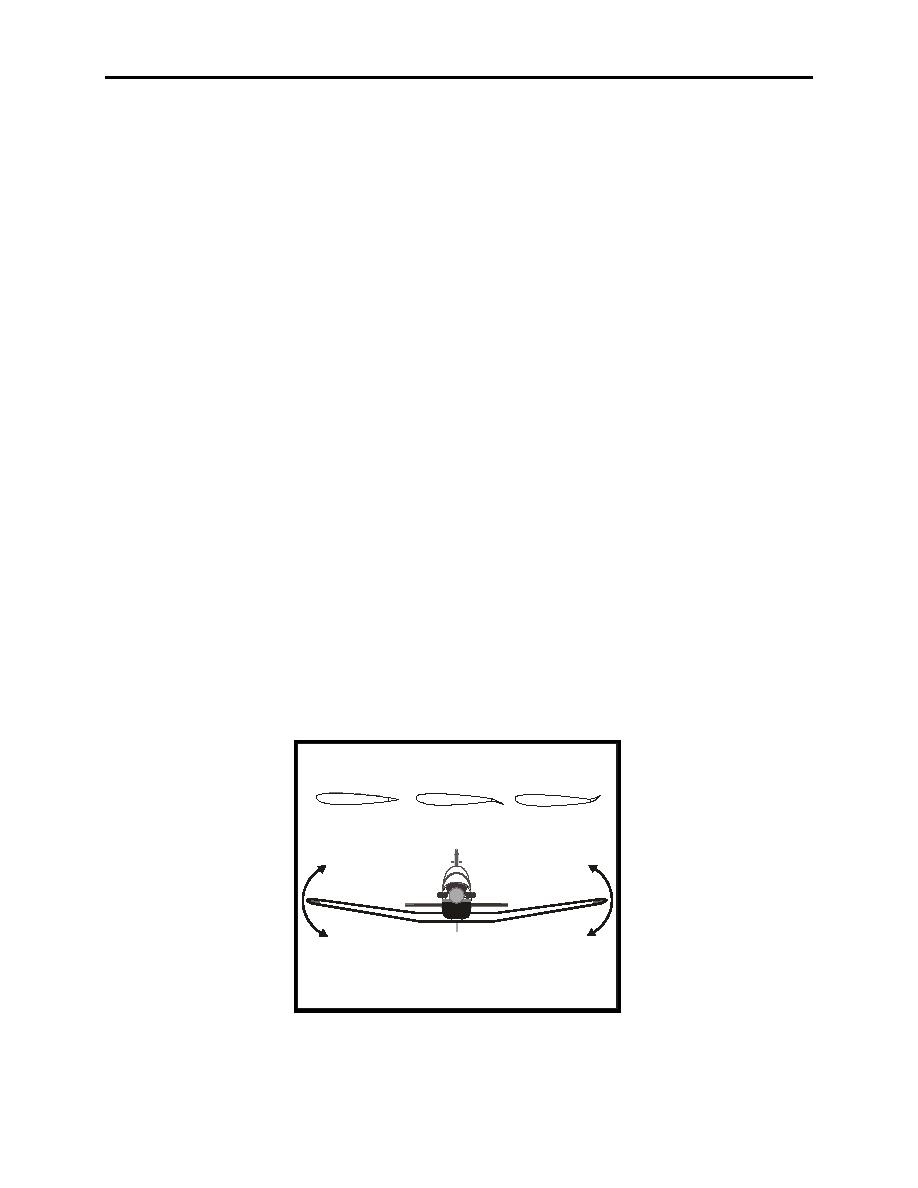 |
|||
|
|
|||
|
|
|||
| ||||||||||
|
|  CHAPTER TWO
T-6A CONTACT
Elevators
The elevators control the aircraft's movement about its lateral axis. They form the rear part of
the horizontal stabilizer, are free to be moved up and down by the pilot, and are connected to a
control stick in the cockpit by means of cables and pulleys. Applying forward pressure on the
stick causes the elevator surfaces to move downward. The flow of air striking the deflected
elevator surfaces exerts an upward force, pushing the aircraft's tail upward and the nose
downward. Conversely, exerting back pressure on the control causes the elevator surfaces to
move up, exerting a downward force to push the tail downward and the nose upward. In effect,
the elevators are the angle-of-attack (AOA) control. When back pressure is applied on the
control, the tail lowers and the nose rises, thus increasing the wing's AOA and lift.
Ailerons
The ailerons control the aircraft's movement about its longitudinal axis (Figure 2-2). There are
two ailerons, one at the trailing edge of each wing, near the wingtips. They are movable surfaces
hinged to the wing's rear spar and are linked together by cables so that when one aileron is
deflected down, the opposite aileron moves up. The ailerons are statically mass balanced with
weights installed on the leading edges of each aileron.
The two wings produce differences in the lift that actually turns the aircraft. To obtain the
horizontal component of lift required to pull the aircraft in the desired direction of turn, apply
lateral control stick force in that direction. When the pilot applies pressure to the left on the
control stick, the right aileron surface deflects downward and the left aileron deflects upward.
The force exerted by the airflow on the deflected surfaces raises the right wing and lowers the left
wing. This happens because the downward deflection of the right aileron changes the wing
camber and increases the AOA and lift on that wing. Simultaneously, the left aileron moves
upward and changes the effective camber, resulting in a decreased AOA and less lift. Thus,
decreased lift on the left wing and increased lift on the right causes the aircraft to bank to the left.
Raising Aileron
Lowering Aileron
Increases Lift
Normal Lift
Decrease Lift
Action of ailerons move the airplane
about its longitudinal axis
Figure 2-2 Aileron Control
2-2
THE FLIGHT CONTROLS
|
|
Privacy Statement - Press Release - Copyright Information. - Contact Us |